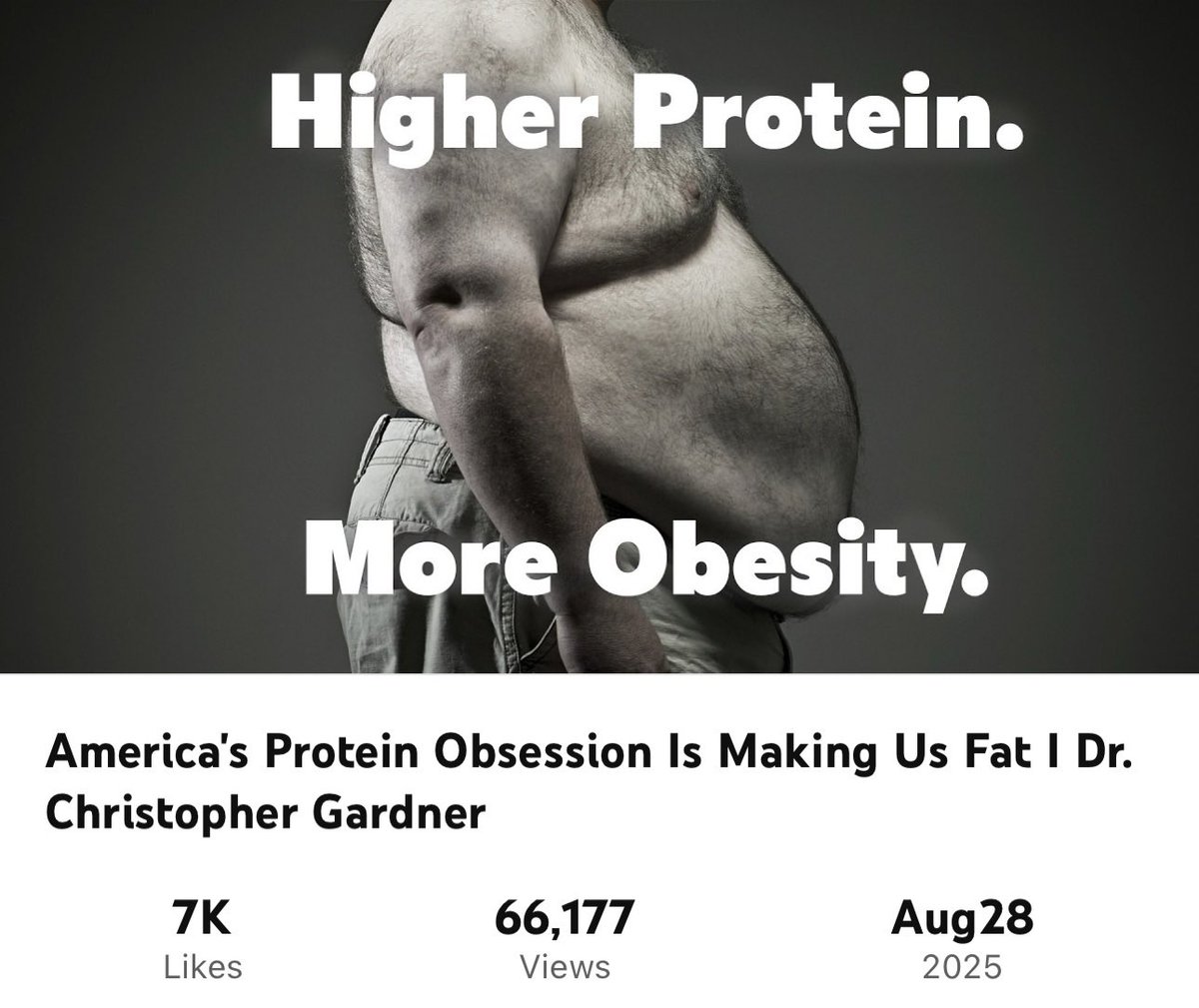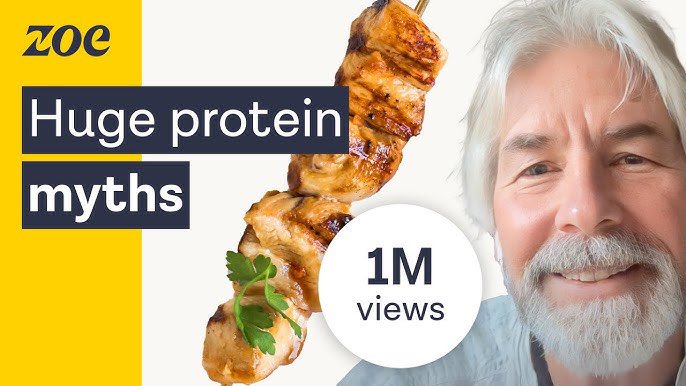Great question! 😁🙌🏼✨
Yes, I follow @GardnerPhD and listen to everything he has to say, much of which I like.
But are Americans really eating “too much” protein, as Dr. Gardner claims?
Well, as it turns out, the answer is yes AND no. 😬
Let’s unpack this.
🧵…
Yes, I follow @GardnerPhD and listen to everything he has to say, much of which I like.
But are Americans really eating “too much” protein, as Dr. Gardner claims?
Well, as it turns out, the answer is yes AND no. 😬
Let’s unpack this.
🧵…

Dr. Gardner argues that most Americans eat way more protein than the RDA (we average ~90g/day vs. ~60g needed). According to Dr. Gardner, extra protein is just extra calories. 

He bases this on absolute protein grams vs. the RDA. True—most of us eat around ~16% of calories from protein, and around ~1.2 g/kg/day. This is definitely adequate protein to be alive (which is, of course, beyond obvious).
But absolute grams are misleading. Obese junk-food eaters often eat lots of protein grams, only because they eat massive calories overall. 

What really matters is protein PERCENT of calories (protein %). Protein leverage [ Raubenheimer & Simpson @eatlikeanimals ] show animals—including humans—overeat carbs/fats if protein % is too low.

Here’s a scenario:
🍔 Obese junk-food eater → 120g protein/day at just 15% of calories.
🥩 High-protein eater → 120g protein/day at 30%.
Same grams. Very different outcomes.
🍔 Obese junk-food eater → 120g protein/day at just 15% of calories.
🥩 High-protein eater → 120g protein/day at 30%.
Same grams. Very different outcomes.

High protein % diets drive:
✔️ Less calorie intake
✔️ Lower body fat %
✔️ Better lean mass retention
✔️ Improved metabolic health
ABSOLUTE grams can’t explain this. But RELATIVE grams can explain this all day long. 😑
✔️ Less calorie intake
✔️ Lower body fat %
✔️ Better lean mass retention
✔️ Improved metabolic health
ABSOLUTE grams can’t explain this. But RELATIVE grams can explain this all day long. 😑

One more thing.
Dr. Gardner is very concerned with diet QUALITY, which I greatly appreciate! 👏🏼😁
Guess what: all micronutrients track with protein foods far more than carbs or fats. Higher protein % diets = better nutrient adequacy, full stop.
[ ht @martykendall2 ]
Dr. Gardner is very concerned with diet QUALITY, which I greatly appreciate! 👏🏼😁
Guess what: all micronutrients track with protein foods far more than carbs or fats. Higher protein % diets = better nutrient adequacy, full stop.
[ ht @martykendall2 ]

So yes, Americans eat “enough” protein in absolute grams. But we only get this because we have huge bodies, for which we eat a ton of protein-diluted calories.
But PROTEIN PERCENTAGE is too low. That leads to obesity, poor body comp, & diluted nutrition.
But PROTEIN PERCENTAGE is too low. That leads to obesity, poor body comp, & diluted nutrition.

PROTEIN PERCENTAGE [protein %] — relative versus absolute quantities — is the missing piece. Worth a rethink, @GardnerPhD? 🤔😁
cc: @mackinprof @eatlikeanimals @donlayman @drgabriellelyon @BioLayne @PeterAttiaMD @foundmyfitness @hubermanlab @DrEenfeldt
cc: @mackinprof @eatlikeanimals @donlayman @drgabriellelyon @BioLayne @PeterAttiaMD @foundmyfitness @hubermanlab @DrEenfeldt

If you found this interesting, you might want to check out the single best book ever written on the general principles of diet and exercise:
😁🙌🏼✨ SatietyPerCalorie.com
😁🙌🏼✨ SatietyPerCalorie.com

• • •
Missing some Tweet in this thread? You can try to
force a refresh
















